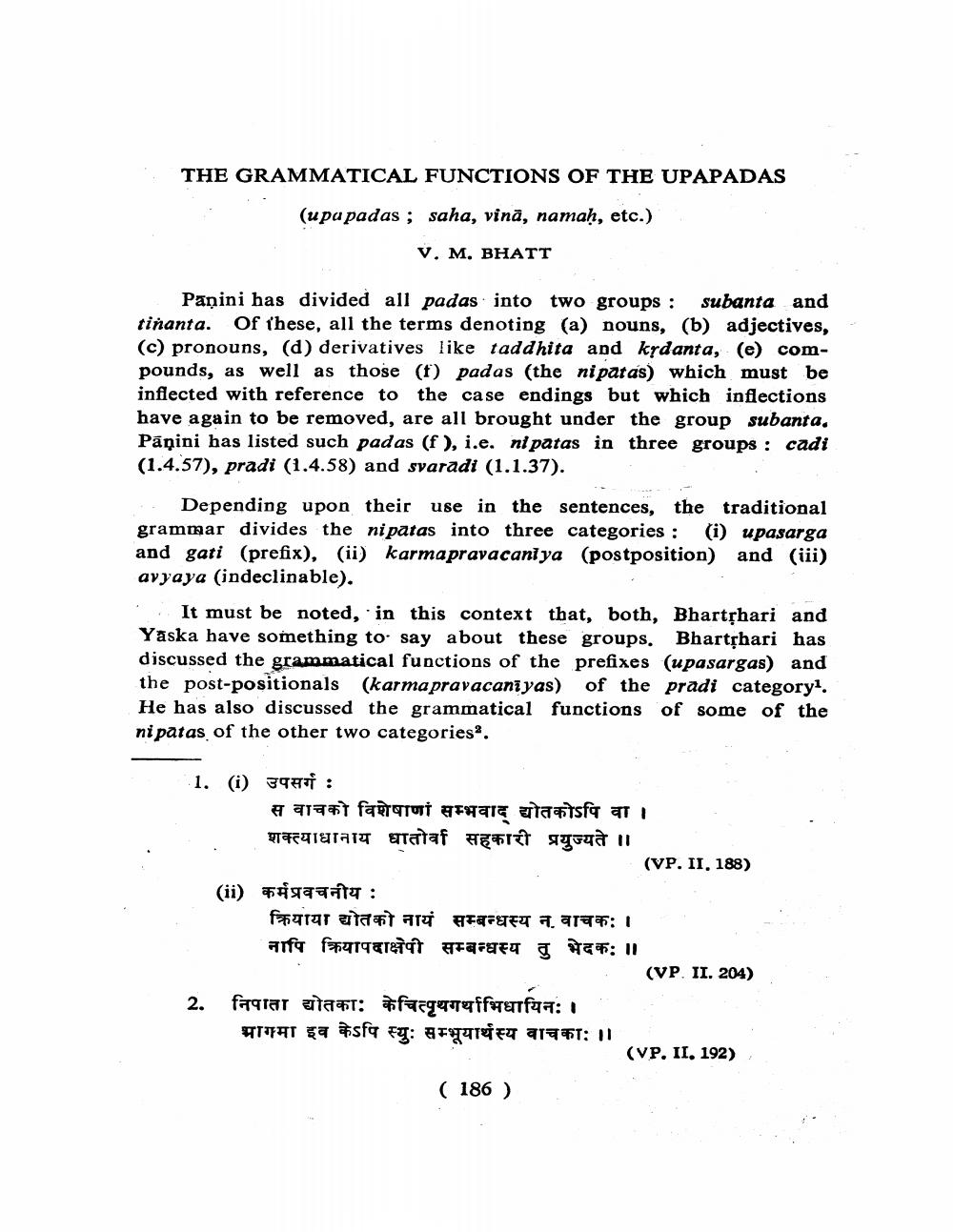________________
THE GRAMMATICAL FUNCTIONS OF THE UPAPADAS
(upa padas; saha, vinā, namaḥ, etc.)
V. M, BHATT
Panini has divided all padas into two groups : subanta and tinanta. Of these, all the terms denoting (a) nouns, (b) adjectives, (c) pronouns, (d) derivatives like taddhita and kydanta, (e) compounds, as well as those (f) padas (the ni patas) which must be inflected with reference to the case endings but which inflections have again to be removed, are all brought under the group subanta. Pāṇini has listed such padas (f ), i.e. ni patas in three groups : cadi (1.4.57), pradi (1.4.58) and svaradi (1.1.37).
Depending upon their use in the sentences, the traditional grammar divides the nipatas into three categories: (i) upasarga and gati (prefix), (ii) karmapravacaniya (postposition) and (iii) avyaya (indeclinable). . It must be noted, in this context that, both, Bhartshari and Yaska have something to say about these groups. Bhartshari has discussed the grammatical functions of the prefixes (upasargas) and the post-positionals (karmapravacaniyas) of the pradi category. He has also discussed the grammatical functions of some of the ni patas of the other two categories
1. (i) 3981:
स वाचको विशेषाणां सम्भवाद द्योतकोऽपि वा। शक्त्याधानाय धातोर्वा सहकारी प्रयुज्यते ॥
(VP. II. 188) (ii) #4999 :
क्रियाया द्योतको नायं सम्बन्धस्य न. वाचकः । नापि क्रियापदाक्षेपी सम्बन्धस्य तु भेदकः ॥
(VP. II. 204) 2. fagrar utawr: #faqaaffrufaa: 1 भागमा इव केऽपि स्युः सम्भूयार्थस्य वाचकाः ।।
(VP. II. 192) ( 186 )




